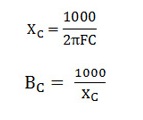What is UE Functionality in LTE?
In LTE, the User Equipment (UE) plays a key role in the mobile network. The UE refers to any device that connects to the LTE network to send and receive data, such as a smartphone, tablet, or modem. Essentially, it’s your device that communicates with the network infrastructure to provide you with the services you need, from making voice calls to browsing the internet.
Let’s dive deeper into the core functions of a UE in LTE networks and how it supports the overall LTE architecture:
- Access to the LTE Network: The primary function of the UE is to connect to the LTE network, either through the eNodeB or base station. The UE performs a process called initial access, which includes the use of synchronization signals to connect to the network.
- Transmission and Reception of Data: Once connected, the UE transmits and receives both user data (internet browsing, app usage, etc.) and control data (signaling for network management). This involves complex functions like modulation, error correction, and scheduling.
- Mobility Management: The UE supports the network in managing mobility. As you move, the UE helps the network determine when and how to handover your connection from one cell to another, ensuring that your services remain uninterrupted during the transition.
- Quality of Service (QoS) Management: The UE also plays a role in maintaining the network’s QoS. It ensures that the data is transmitted according to the service priority, whether it’s for a voice call, video streaming, or simple browsing. The UE communicates with the eNodeB to request and maintain the appropriate level of service.
- Power Management: To conserve battery life, the UE manages its power usage efficiently. It adjusts its power based on the strength of the signal and its current activity (e.g., idle mode vs. active mode). This helps ensure that you can use your device for longer periods without frequent recharging.
- Authentication and Security: The UE is responsible for ensuring that the connection to the network is secure. It provides authentication credentials and handles encryption to protect the integrity of your communications.
The UE is also capable of handling various types of signaling procedures, such as RRC (Radio Resource Control) signaling, to maintain an optimal connection to the network. This signaling helps in managing your session, including when to start or end a connection, and in maintaining seamless communication between you and the network.
To summarize, the UE in LTE is much more than just a device. It is a vital component of the LTE network, facilitating communication, managing resources, ensuring security, and maintaining a quality user experience as you interact with the network. The functionality of the UE directly impacts your experience as a user, from the stability of your connection to the speed of your data transfer.
As we’ve seen in earlier articles, LTE has a robust architecture designed to deliver high-speed data and efficient communication. The UE is central to this system, ensuring that all the benefits of LTE are effectively delivered to you, the end-user, regardless of your movement or network changes.

